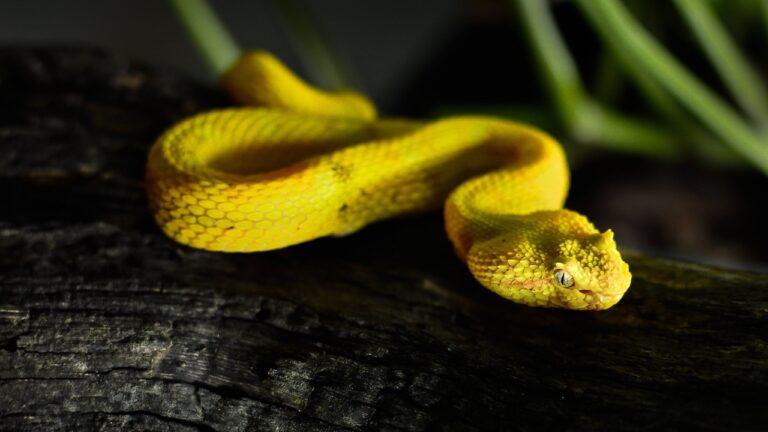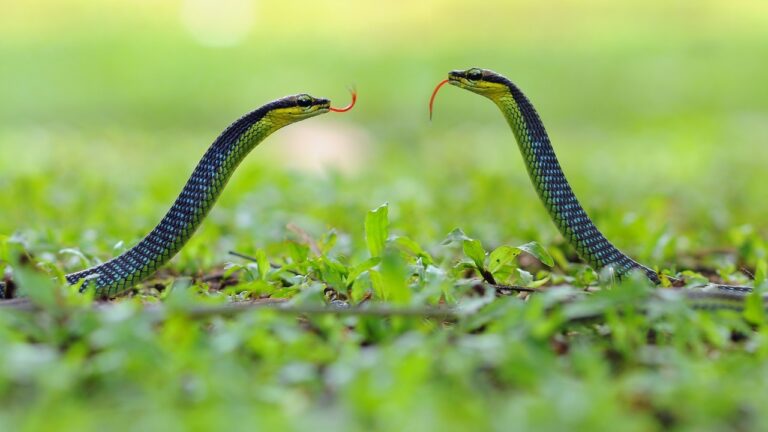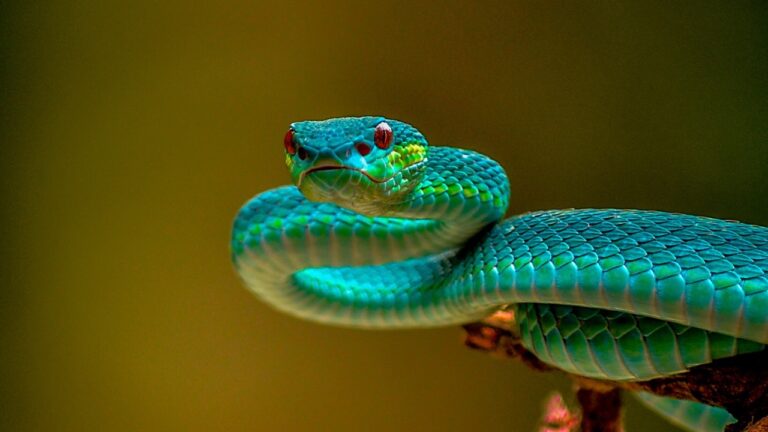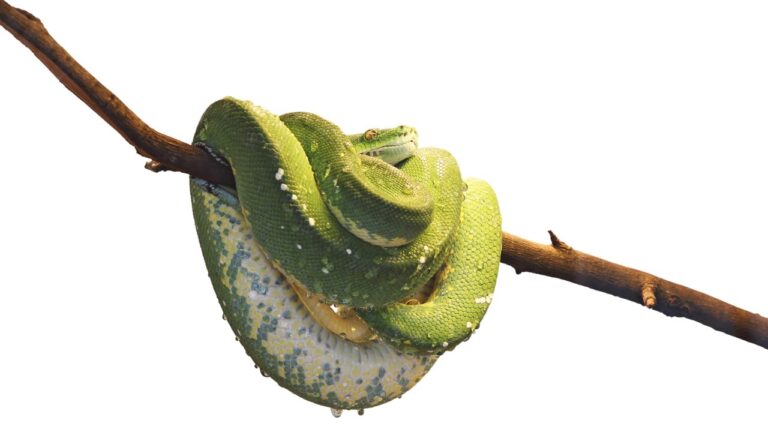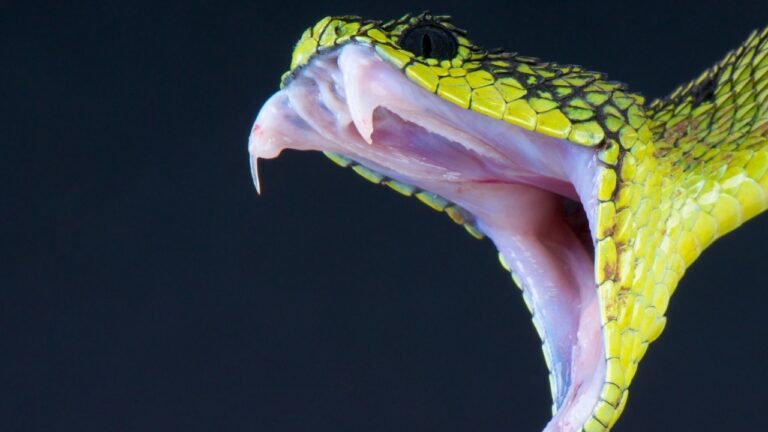Snake Feeding Routine: Optimize Your Snakes Nutrition & Diet
Importance of a proper snake feeding routine
When it comes to keeping a snake as a pet, maintaining a proper feeding routine is crucial for their overall health and well-being. Snakes, being carnivorous creatures, have specific nutritional needs that must be met in order to ensure their growth, development, and longevity.
A well-planned and structured feeding routine not only provides the necessary nutrients for your snake, but it also helps in avoiding potential health issues that can arise from improper feeding practices. By understanding the importance of a balanced and consistent diet, snake owners can optimize their pet’s nutrition and contribute to their overall quality of life.
One of the key benefits of establishing a proper snake feeding routine is that it allows you to closely monitor your snake’s diet and ensure they are receiving the appropriate amount of food. Overfeeding can lead to obesity, while underfeeding can result in malnutrition and stunted growth. By adhering to a consistent feeding schedule, you can strike the right balance and prevent these issues from arising.
Another advantage of a proper feeding routine is that it helps to mimic the natural feeding behavior of snakes in captivity. Snakes are known for their unique feeding habits, such as swallowing their prey whole. By understanding their natural feeding behavior and providing a suitable environment for feeding, you can create a stress-free experience for your snake and promote their overall well-being.
Moreover, a proper snake feeding routine allows for the early detection of any potential health problems. By closely monitoring your snake during feeding, you can identify any changes in their appetite, weight, or behavior. This can help you catch any underlying health issues before they become serious problems.
In the following sections, we will delve deeper into the different aspects of snake nutrition and explore how to establish an effective feeding routine. We will discuss the types of snakes and their diets, their nutritional needs, and the frequency and methods of feeding. Additionally, we will provide valuable tips to help you make informed decisions when it comes to selecting prey, creating the right feeding environment, and avoiding common mistakes. So, let’s embark on this journey to optimize your snake’s nutrition and diet!
For a comprehensive guide on snake feeding routines and schedules, be sure to check out our snake feeding guide.
Understanding Snake Nutrition
When it comes to providing proper care for your pet snake, understanding its nutritional needs is crucial. By delving into the world of snake nutrition, you’ll be better equipped to optimize your snake’s diet and ensure its overall well-being.
Types of Snakes and their Diets
Snakes are an incredibly diverse group of reptiles, with a wide range of species and sizes. Consequently, their dietary preferences and requirements vary greatly. Some snakes are carnivorous, feeding exclusively on other animals, while others may incorporate fruits or vegetables into their diets.
For instance, pythons and boas are constrictor snakes that primarily feed on mammals and birds. Their powerful bodies allow them to overpower and swallow prey whole. On the other hand, colubrids, such as corn snakes and king snakes, have a more varied diet, including rodents, amphibians, and even other snakes.
It’s important to research the specific dietary needs of your snake’s species to ensure you provide the appropriate nutrition. This will help maintain their health and prevent any nutritional deficiencies that may arise from an inadequate diet.
Nutritional Needs of Snakes
Snakes require a well-balanced diet that provides all the necessary nutrients for their growth, development, and energy requirements. While the exact nutritional needs may vary depending on the species, there are a few key elements to consider.
Protein is a vital component of a snake’s diet, as it aids in muscle development and repair. Snakes require a diet rich in protein, which they obtain from their prey. Additionally, calcium is essential for maintaining healthy bones and preventing conditions such as metabolic bone disease.
It’s also important to consider the vitamin and mineral requirements of your snake. These micronutrients play a crucial role in various bodily functions, including digestion, reproduction, and immune system function. A well-rounded diet that includes a variety of prey items will help ensure your snake receives all the necessary vitamins and minerals.
By understanding the types of snakes and their specific dietary needs, you can provide the optimal nutrition for your scaly friend. This knowledge will guide you in making informed decisions when it comes to selecting prey items and formulating a balanced diet.
To further explore the topic of snake nutrition, check out our comprehensive snake feeding guide. It delves deeper into the various aspects of snake nutrition and provides valuable insights into creating a feeding routine that caters to your snake’s unique requirements.
Establishing a Snake Feeding Routine
Establishing a proper snake feeding routine is essential for the overall health and well-being of these amazing reptiles. By following a consistent feeding schedule and ensuring that the snakes receive the correct prey size, you can optimize their nutrition and help them thrive in captivity.
Frequency of Feedings
One of the key aspects of a snake feeding routine is determining the frequency of feedings. The frequency can vary depending on the species, age, and size of the snake. Younger snakes typically require more frequent meals, while adult snakes may only need to be fed once every one to two weeks. It is important to research the specific dietary needs of your snake species to ensure that you are providing them with the appropriate feeding schedule.
Choosing the Right Prey Size
Choosing the right prey size is crucial for the health and digestion of your snake. Offering prey that is too small may not provide adequate nutrition, while prey that is too large can lead to regurgitation or other digestive issues. It is recommended to feed prey that is approximately the same width as the snake’s widest part of the body. This ensures that the snake can consume the prey comfortably and digest it properly.
Feeding Methods
There are different feeding methods that can be employed when establishing a snake feeding routine. The most common methods include live feeding, pre-killed feeding, and frozen-thawed feeding. Live feeding involves offering live prey to the snake, while pre-killed feeding involves euthanizing the prey before offering it. Frozen-thawed feeding involves thawing frozen prey and offering it to the snake. Each method has its advantages and disadvantages, and it’s important to choose the method that works best for your snake and minimizes any potential risks.
Monitoring Weight and Body Condition
Regularly monitoring the weight and body condition of your snake is an important part of establishing a feeding routine. This helps you ensure that your snake is maintaining a healthy weight and body condition. Weight loss or sudden weight gain can be indicators of underlying health issues or improper feeding practices. By keeping track of your snake’s weight and body condition, you can make adjustments to their feeding routine if necessary and address any potential concerns.
Remember, establishing a snake feeding routine is not a one-size-fits-all approach. Each snake is unique, and it’s crucial to consider their species, age, size, and individual needs when developing a feeding plan. By providing the right frequency of feedings, choosing the appropriate prey size, employing suitable feeding methods, and monitoring their weight and body condition, you can ensure that your snake receives the nutrition it needs to thrive.
For more detailed information and resources on snake feeding routines, check out our snake feeding guide and snake feeding tips. Additionally, if you need assistance with specific snake feeding problems or want to explore different snake feeding schedules and plans, our snake feeding specialists are here to help.
Feeding Tips
When it comes to feeding your snake, there are a few essential tips to keep in mind. From prey selection and preparation to creating the right feeding environment, these practices will ensure that your snake receives the proper nutrition it needs for optimal health and growth.
Prey Selection and Preparation
One of the most important aspects of snake feeding is selecting the right prey for your snake. Snakes have diverse dietary needs depending on their species, so it’s crucial to do your research and understand what your snake requires. For example, some snakes are carnivorous and primarily eat rodents, while others may prefer insects or even fish.
When selecting prey, it’s essential to choose high-quality, nutritious options. You want to ensure that the prey you offer is fresh, disease-free, and appropriately sized for your snake. A snake feeding chart or guide can be a helpful resource in determining the appropriate prey size for your snake’s species and age.
Remember, the prey should be no wider than the widest part of your snake’s body to prevent any digestive issues or injuries. If the prey is too small, it may not provide sufficient nutrition, while prey that is too large can lead to regurgitation or even choking.
Once you have chosen the appropriate prey, it’s crucial to prepare it properly before feeding it to your snake. Thaw frozen prey thoroughly to room temperature, ensuring that there are no cold spots. Cold prey can be difficult for snakes to digest and may lead to digestive problems.
Feeding Environment
Creating the right feeding environment for your snake is essential for successful feeding. Snakes are known to be sensitive to their surroundings, so it’s crucial to provide them with a calm and quiet space during mealtime.
Avoid feeding your snake in its primary habitat or enclosure to minimize stress and potential aggression. Instead, consider using a separate feeding container, such as a plastic tub or a designated feeding tank. This helps establish a clear distinction between feeding and living spaces, reducing the risk of your snake associating your hand with food and biting.
To further enhance the feeding environment, you can add some privacy for your snake. This can be achieved by placing a hide or a small box within the feeding container. Snakes feel more secure in enclosed spaces, which can encourage them to eat without distractions.
Handling During Feeding
When it comes to handling your snake during feeding, it’s generally best to avoid it altogether. Snakes are solitary animals that prefer to eat undisturbed, and any interference can disrupt their feeding behavior.
Resist the temptation to touch or handle your snake while it’s in the process of consuming its prey. This can cause stress and potentially lead to regurgitation or other digestive issues. Allow your snake to finish its meal in peace, and then give it ample time to digest before handling it again.
However, it’s important to note that every snake is unique, and some may be more tolerant of handling during feeding than others. If you have a particularly docile snake that doesn’t seem to mind being handled during meals, you can cautiously try it. Just remember to be gentle and observe your snake’s behavior for any signs of discomfort or stress.
By following these feeding tips, you can ensure that your snake receives the nutrition it needs in a stress-free and safe manner. Remember, proper prey selection and preparation, creating the right feeding environment, and avoiding unnecessary handling are key factors in maintaining your snake’s well-being. Happy feeding!
Did you know that snakes have unique feeding habits? Learn more about snake feeding habits in our comprehensive guide.
Common Mistakes to Avoid
When it comes to feeding your snake, it’s important to be aware of some common mistakes that many snake owners make. By avoiding these pitfalls, you can ensure that your snake is receiving the proper nutrition it needs to thrive. Let’s take a closer look at some of these mistakes and how to avoid them.
Overfeeding
One of the most common mistakes snake owners make is overfeeding their snakes. While it may be tempting to offer your snake a meal every time it shows interest, this can lead to serious health issues. Overfeeding can result in obesity, which can put a strain on your snake’s internal organs and lead to a shorter lifespan.
To avoid overfeeding, it’s important to establish a snake feeding schedule and stick to it. This will help you regulate the frequency and quantity of meals your snake receives. Refer to a snake feeding chart or snake feeding guide to determine the appropriate feeding schedule for your particular species of snake.
Inadequate Prey Size
Another mistake that snake owners often make is offering prey items that are too small for their snakes. Inadequate prey size can lead to malnutrition and a lack of essential nutrients. It’s important to choose prey items that are appropriately sized for your snake’s age and size.
To determine the right prey size, consider the girth of your snake. The prey item should be about the same size or slightly larger than the thickest part of your snake’s body. This will ensure that your snake is able to swallow its meal without any difficulties.
Feeding Live Prey
Feeding live prey to snakes is a controversial topic among reptile enthusiasts. While some snake owners prefer to feed live prey for the sake of stimulating the snake’s natural hunting instincts, it comes with its own set of risks. Feeding live prey can result in injuries to your snake if the prey fights back, and it can also introduce parasites or diseases.
A safer alternative is to feed your snake pre-killed or frozen-thawed prey. This eliminates the risk of injury and reduces the chances of your snake contracting any illnesses. Additionally, feeding pre-killed or frozen-thawed prey allows you to control the prey size more effectively.
Ignoring Signs of Illness
Lastly, it’s important not to ignore any signs of illness in your snake. Ignoring signs of illness can have severe consequences for your snake’s health and well-being. It’s crucial to monitor your snake closely and be aware of any changes in behavior, appetite, or appearance.
If you notice any abnormalities, such as lethargy, loss of appetite, or unusual discharge, it’s important to seek veterinary care promptly. Early detection and treatment of illnesses can greatly increase the chances of a successful recovery.
By avoiding these common mistakes, you can ensure that your snake’s feeding routine is optimized for its nutritional needs. Remember to refer to reputable snake feeding resources and consult with a veterinarian if you have any concerns about your snake’s health or diet.
Read more about snake feeding problems and how to overcome them in our comprehensive guide.
Conclusion
In conclusion, establishing a proper snake feeding routine is essential for optimizing your snake’s nutrition and overall health. By understanding the nutritional needs of different snake species and implementing a well-balanced diet, you can ensure that your snake thrives in captivity.
One of the key factors in a snake feeding routine is determining the frequency of feedings. This can vary depending on the age and species of your snake, so it’s important to research and consult reliable sources to create a feeding schedule that suits your specific snake’s needs. Monitoring your snake’s weight and body condition is also crucial to ensure that they are receiving the right amount of food.
Choosing the right prey size is another important aspect of snake feeding. It is essential to select prey that is appropriate for your snake’s size and age. Feeding prey that is too large can lead to digestive issues and regurgitation, while feeding prey that is too small may not provide adequate nutrition. Consulting a snake feeding chart or guide can help you make informed decisions about prey size.
Feeding methods can vary depending on the species and individual preferences of your snake. Some snakes may prefer live prey, while others may readily accept frozen or pre-killed prey. It is important to consider the safety of both your snake and yourself when handling live prey, as well as the potential risks associated with feeding live prey. Considering alternative feeding methods, such as scenting or assist-feeding, can also be beneficial in certain situations.
When it comes to feeding, there are a few common mistakes that should be avoided. Overfeeding can lead to obesity and other health issues, so it’s important to provide an appropriate amount of food for your snake. Additionally, feeding prey that is too large or too small can have negative consequences, so it’s crucial to select prey that is the right size for your snake. Feeding live prey can also pose risks to your snake, such as injury or parasites, so it’s generally recommended to feed pre-killed or frozen prey whenever possible. Lastly, ignoring signs of illness can lead to serious health complications, so it’s important to monitor your snake closely and seek veterinary assistance if any concerns arise.
By following these guidelines and avoiding common mistakes, you can ensure that your snake’s feeding routine is optimized for their health and well-being. Remember to always do thorough research and consult reputable sources for accurate information on snake feeding habits. With a well-established snake feeding routine, you can provide your snake with the nutrition they need to thrive in captivity.
For more information and helpful tips on snake feeding, please visit our snake feeding tips page.



